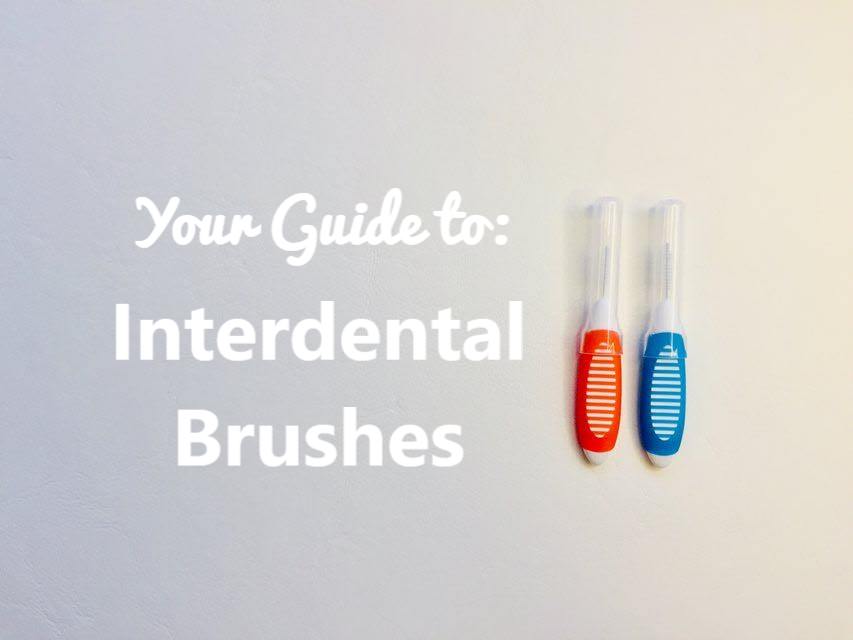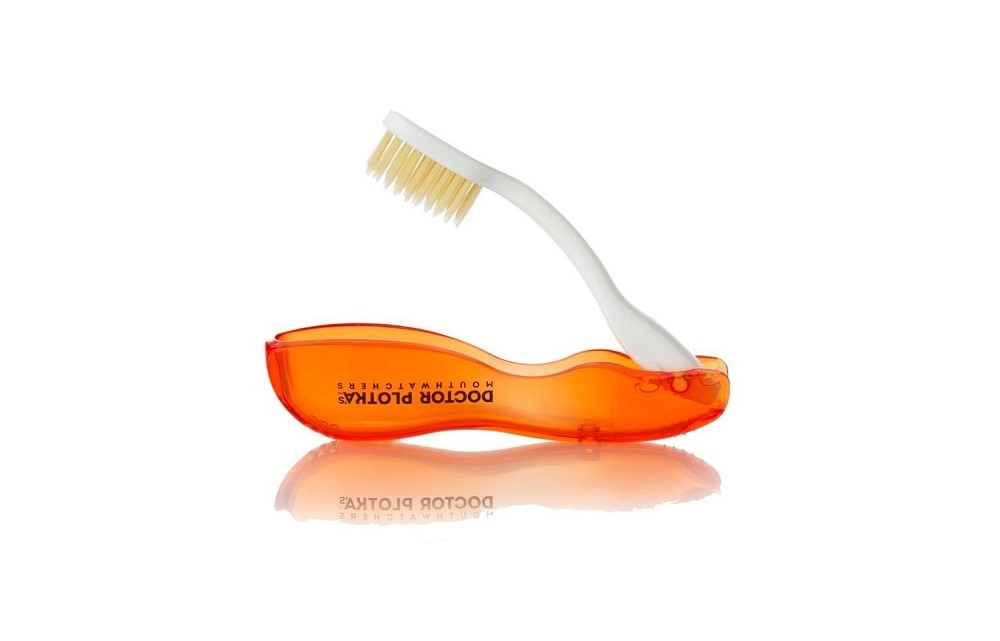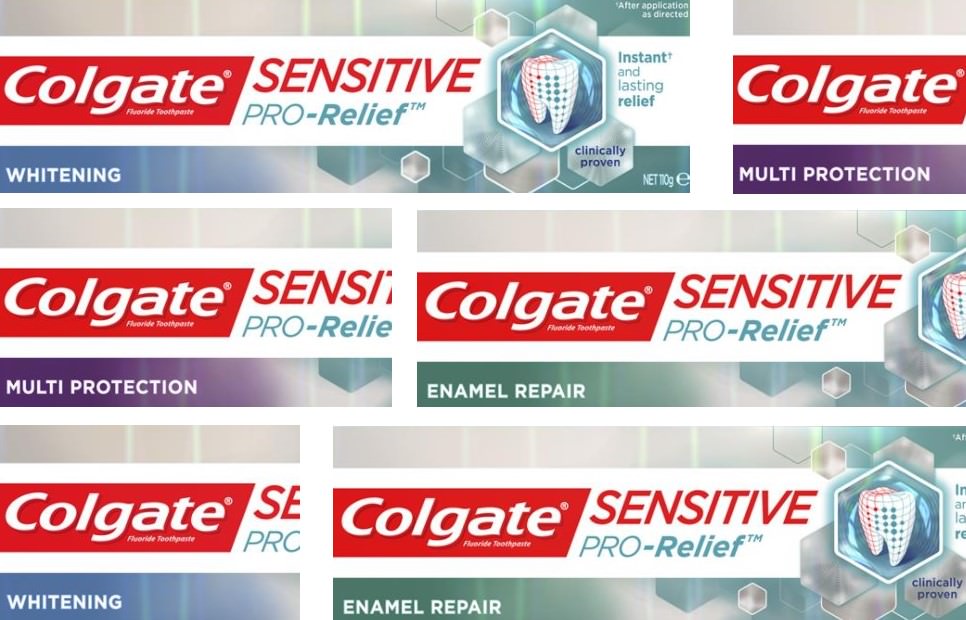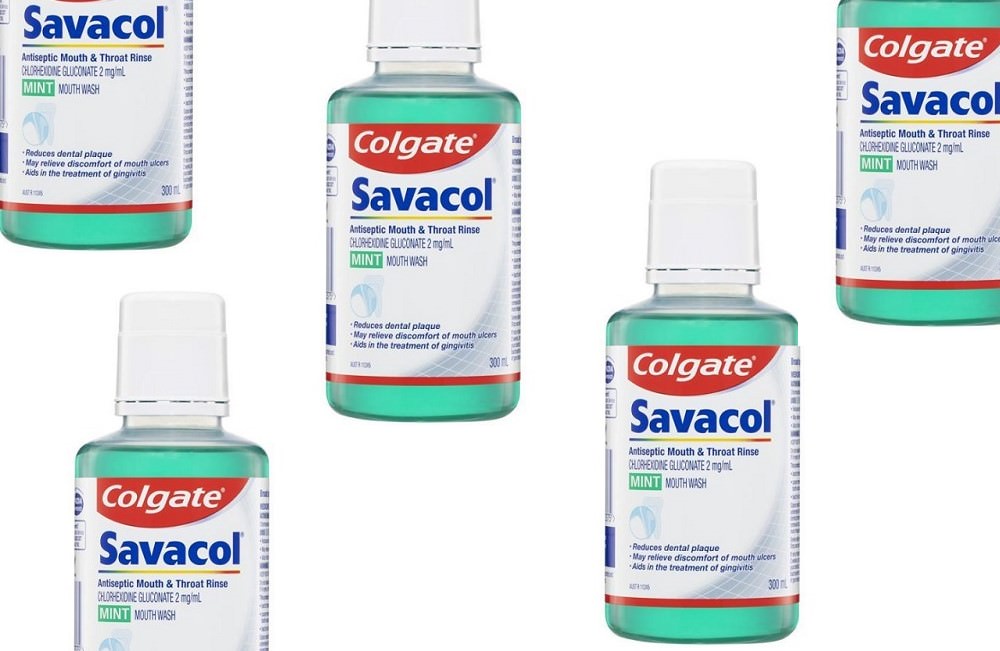Your Dental Guide to Interdental Brushes
If you’re reading this post, you’ve probably heard the term ‘Interdental Brush’. But just what is an Interdental Brush?
An Interdental Brush is a device you can use to help maintain your dental hygiene, as it cleans parts of your teeth a normal toothbrush can’t reach.
They have a narrow brush that is placed on top of a small handgrip. The brush has bristles on either side and can fit between your teeth.
Essentially, it is performing the same task as your normal toothbrush, but within the gaps of your teeth.
They are sold in many different colours, sizes, shapes, and your choice of firmness for the bristle.
In this post, I will discuss the pros and cons of Interdental Brushes. I will also compare Interdental Brushes to Waterpiks and flossing, as well as answer the most asked questions about Interdental Brushes.
Let’s get started!
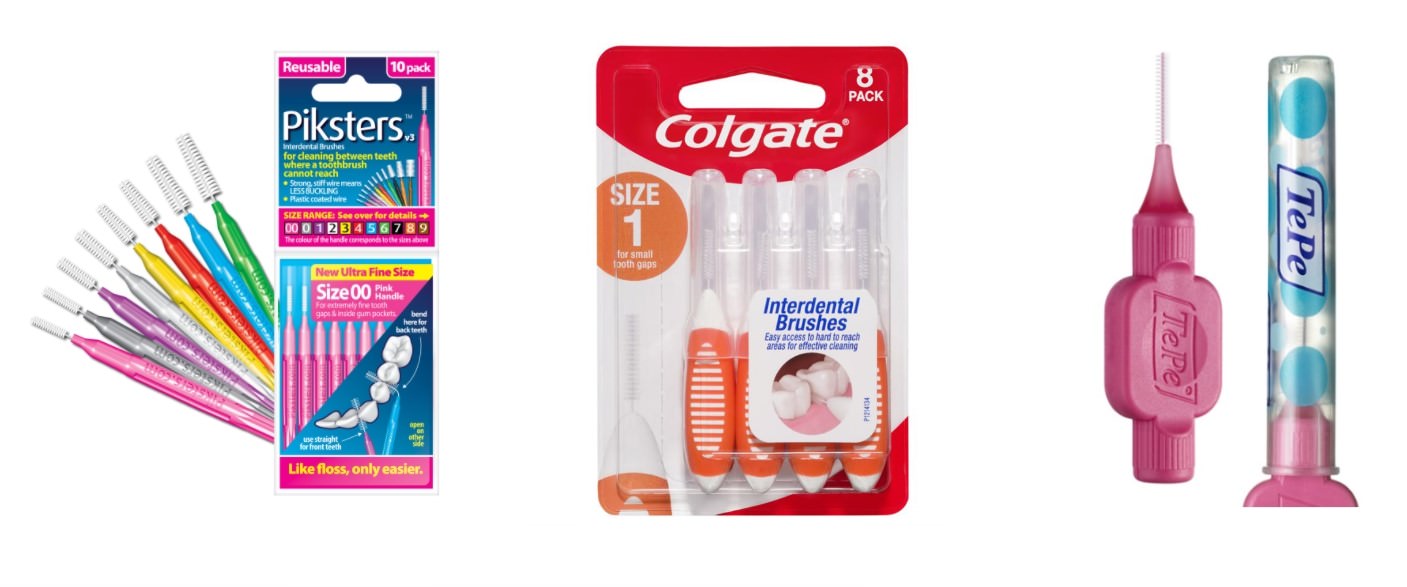
3 Different Brands of Interdental Brushes sold throughout Australia
Interdental Brushes – What are They?
An interdental brush removes mushy plaque and debris from in-between your teeth.
Their bristles are soft and they twist, which helps to extract the debris and plaque. This little device, if used properly and consistently can help prevent bad breath, gingivitis, and gum disease.
Most brands have a wide range of sizes, so you can usually find one to fit your teeth. They’re reusable, so have a good quality-price-ratio.
Many people find them easier than flossing. I will elaborate on this under the sub-heading “Interdental Brushes vs. Flossing”.
I’ve reviewed and tested some of the most well-known Interdental Brushes on the market and you can check out some of my review posts below:
– Piksters Interdental Brush Review
More Information on Interdental Brushes
Interdental brushes can be more costly than floss, so that’s something to think about.
If you are reusing an interdental brush for a period of time, you need to think about reducing the risk of any bacteria building upon the brush. There is a limit to how long you can use these dental hygiene tools.
Using the right size to get in-between your teeth is important. You may have a few hits-and-misses finding your size at first. It needs to glide through without causing issues for your gums, so depending on your mouth size, there may be a restriction as to where they will reach.
To find the correct size, when you are next visiting your dentist or hygienist, ask them what size is a good fit for your teeth and will be able to let you know which size of Interdental Brush to go with.
Should the wire bend out of shape or get damaged, you must follow the instructions of the product manufacturer. Most times if it does go out of shape or get damaged you need to throw it out.
Feel free to read this post for tips to reduce the chance of damaging yourself when interdental brushing.
How to Use Interdental Brushes
Because there are quite a few different brands that offer interdental brushes, instructions may differ slightly. But most follow a similar way to how to use them.
It is important not to force an interdental brush between your teeth, you could cause damage to your gums so treading lightly is ways the preferred method.
You start by selecting the right size, if you aren’t sure what that is, consult your dentist or just start with the smallest size available. More on choosing the correct size below.
For me, I have reasonably tight teeth so I prefer using a Piksters size 00, I find this size works well and it inserts smoothly, which is perfect.
If you have slightly more space between your teeth, Piksters sizes 0 up to 2 are worth a try.
I start with my front top teeth and work outwards, one side at a time. Try to aim to do each of your quadrants (4 selections of your teeth).
As you go, remember to not bend the interdental brush (unless the instructions say to do so), if you do and it’s not recommended, it can distort and damage the integrity of the interdental brush and you will probably need to get a fresh one.
Slide the brush in between the gap of your teeth gently a couple of times, each.
Back teeth can be tricky. Piksters recommend “use one finger to push the very tip of the brush head over to an angle of approximately 45 -90 degrees. Pushing the tip will avoid a sharp bend where the plastic meets the wire and reduces stress and breakage in the metal”.
Some brands like Tepe have Interdental Brushes say you can bend the base of the brush, making it easier to insert gently.
Each brand has its own instructions on how to use the Interdental Brush which is found on the back of the packaging or online.
So that’s how you use an Interdental Brush. It is fairly straightforward. So to recap below, here are some important points to remember:
- Select the right interdental brush size.
- Don’t force the brush at any time, you could cause damage to your gums.
- Start at your front top teeth and work side to side, then your bottom teeth.
- Back teeth are tricky, use a forefinger to guide the brush head.
How to Choose Your Interdental Brush Size?
This gets asked a lot and it can be confusing. Here are some helpful tips in selecting the correct size for an interdental brush.
First, the best and easiest way is to start with the smallest size possible.
Each brand of interdental brush will have its own size chart so you will need to pick one brand and test out some sizes.
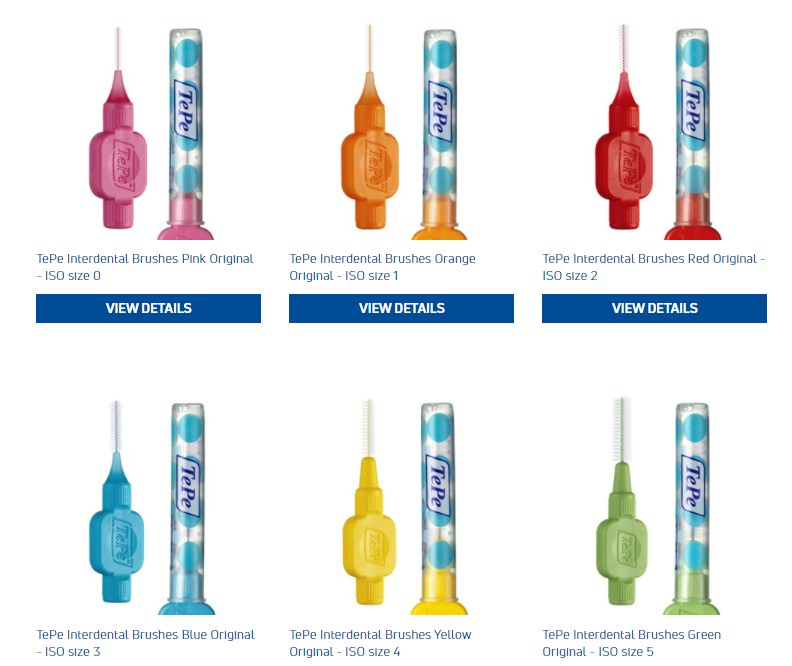
Tepe makes 9 different sizes of Interdental Brushes
Another great method to work out the perfect size for your teeth is to ask your friendly dentist.
At your 6 month dental checkup, simply ask your dentist or dental hygienist what is my preferred size? They will definitely be able to confirm this for you.
Whatever way you choose to select your interdental brush size it’s important to remember to never force the interdental brush between your teeth.
Doing this can damage your gums. You want the brush to slide through easily, with only gentle pressure being applied.
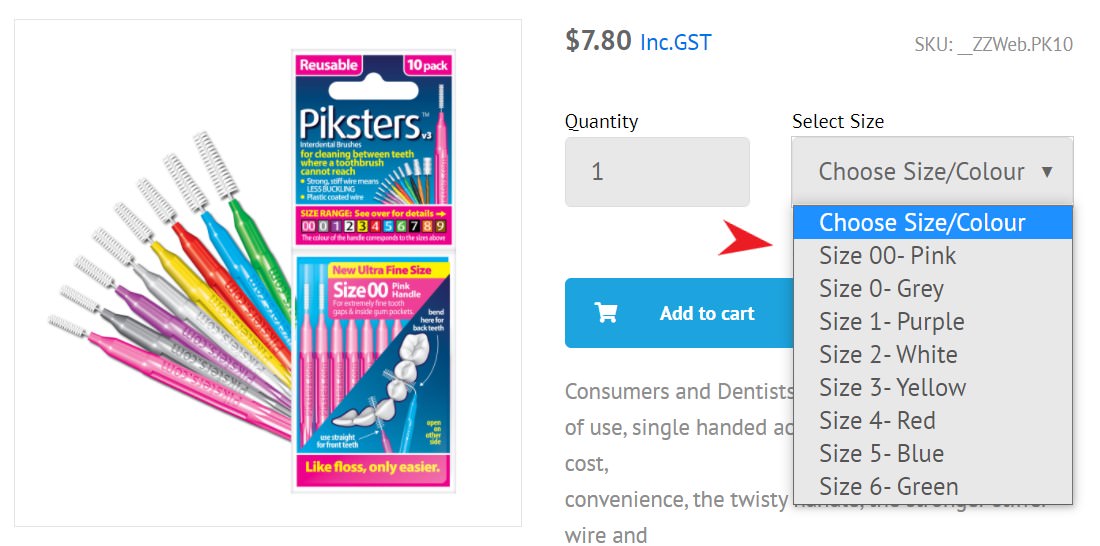
The selection of Pikster Interdental Brushes – Source Piksters.com
How Many Times Can You Use an Interdental Brush?
Depending on what brand of Interdental Brush you use, will determine how long you can use your brush.
Let’s take Piksters for instance, they recommend using an interdental brush for a period of a few days or more, depending on how hard you work them.
Colgate’s Interdental Brushes seem to last a little longer with recommendations from Colgate to “replace weekly or as needed”.
Tepe also makes Interdental Brushes and they say to change their Interdental Brushes “when the filaments become worn”.
The trick to making an Interdental Brush last longer is to use the right size from the beginning, never force the brush between your teeth and finally, rinse and clean it after each use.
Should I Use Interdental Brushes Before or After Brushing?
If you look at this logically, using your interdental brush first then brushing your teeth makes a lot of sense.
You clean between your teeth and then use your ‘soft’ toothbrush to give your entire teeth, gums and mouth a clean.
According to the Oral Health Foundation, their study concluded that “flossing followed by brushing is preferred to brushing then flossing in order to reduce interdental plaque and increase fluoride concentration in interdental plaque”.
If you are someone that likes to use interdental brushing or flossing first then brush, that’s fine also. Using an interdental brush or floss consistently is much more beneficial than not using them at all.
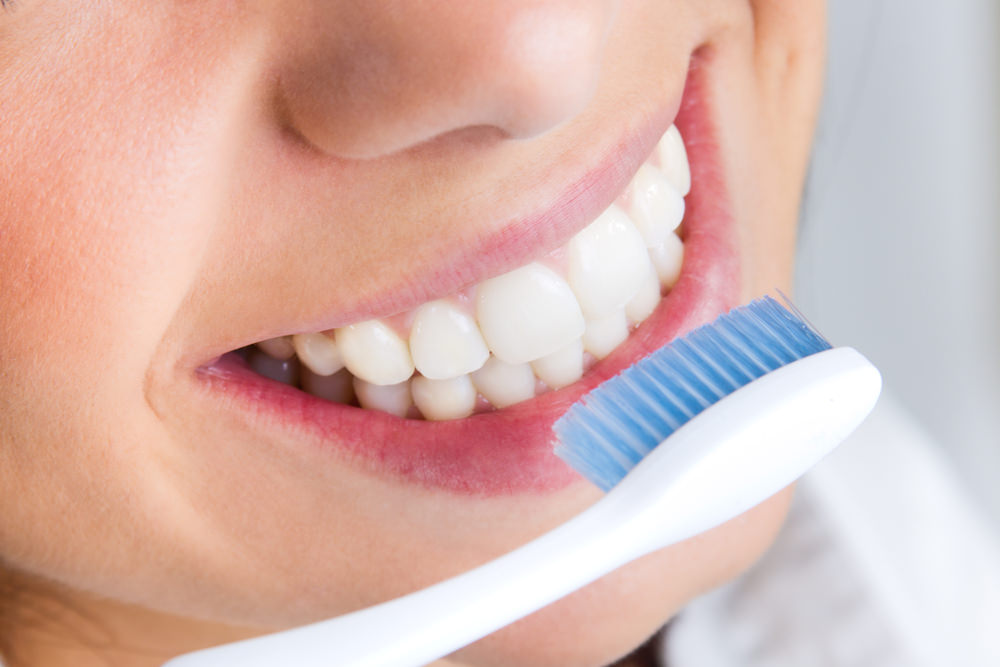
Brushing your teeth after using an Interdental Brush is preferred
How to Avoid Bleeding When Using Interdental Brushes?
When you first use an Interdental Brush, you may experience bleeding and quite possibly some tender or sensitive areas where you have inserted the Interdental Brush.
Don’t be too concerned about bleeding when you first start using an Interdental Brush.
If you have selected the correct brush size and aren’t forcibly inserting it in between your teeth, then the bleeding should reduce as you proceed and progress with your Interdental Brushing.
Should Bleeding continue or should it get worse, discontinue use of your Interdental Brush. It may be wise to visit your friendly dentist or hygienist as you may have an underlying condition, such as gingivitis or potentially gum disease.
So to recap, here are a few points that are important to remember:
- Select the correct Interdental Brush size
- If you don’t know what size, start with the smallest size possible and go from there.
- Never force the brush in between your teeth, doing so will increase the chance of damage to your gums and additional bleeding.
- Disregard an Interdental Brush that is worn or damaged.
What are Alternate Options to Interdental Brushes?
If you are not keen on Interdental Brushes and want to try something else, below are a few other options that we recommend you try.
I would like to stress, the use of Interdental Brushes is one, if not, the best method of reducing plaque between your teeth.
Let’s discuss some other options!
Interdental Brushes vs. Waterpik
A Waterpik is an appliance that utilises water to rinse and remove your plaque and bacteria.
They’re made up of a tank, a pump, a handgrip that has a button to let out the water, and a tip that guides the flow of the water. The water is a strong, oscillating stream, with between 5 – 90 psi of force.
One of the most popular Waterpiks is the Cordless Advanced Water Flosser WP-560. Extremely convenient and portable.
If you have space in your bathroom and want something more permanent, try the Waterpik Ultra Professional Water Flosser WP-660.
Let’s get into the pros and cons of these Waterpiks.
Waterpik Pros
- Gentle – A Waterpik can be softer, so you have less chance of injuring your gums. As such, Dentists will often suggest water picks for patients who have:
- Had multiple major restorations.
- Had orthodontic treatments.
- Severe gum disease or sensitive gums, or
- Difficulty performing interdental brushing.
Waterpik Cons
- Expensiveness – The water pick itself can be costly, and the tips must be changed every 3 – 6 months.
- The difficulty of use – Many find water picks messy when learning, and have water spraying everywhere
- Effectiveness – If not used properly, such as at too high psi, they can force food deeper into your soft tissue.
To learn how to use a water pick, you can read here.
Interdental Brush Cons
- Sizes – Even the smallest brush may not fit between some peoples’ teeth. Also, depending upon your gaps, you may have to use different sizes for your front and back teeth.
- Bacteria build-up – After using once, an interdental brush will never be fully sterile, which can irritate your gums.
- Replacement – They need to be replaced when the bristles begin to become worn down.
Now, moving onto comparing floss to Interdental Brushes.
Interdental Brushes vs. Flossing
While these items have their differences, their purpose is the same.
That is, to remove debris from between your teeth, prevent plaque from building up, and hopefully stop your teeth from decaying.
So, if you can perform one method well and on a regular basis, you’re on the correct path to maintaining great dental hygiene.
But many people fancy one option more than the other, so let’s cover the pros and cons of each.
Dental Floss Pros
- Cheap – A tape of dental floss is a lot less costly than even the cheapest brush. Floss is meant to only be used once, then disposed of.
- Disposable & Hygienic – You’re meant to use a new piece of floss for every tooth. Meaning, you should use a clean piece of floss between each tooth. This is to prevent spreading any bacteria or leftover food from one tooth to another.
- Ease of choice – Floss is ‘one size fits all’.There are none of the complications of choosing the wrong size and hurting your gums if you do.
- Fits into very small gaps – Floss is well-suited for gaps so narrow that the smallest brush cannot fit.
Dental Floss Cons
- Uncomfortable – The back-and-forth motion of flossing can feel make some people feel uneasy. This is particularly so when the floss comes into contact with sensitive or back teeth.
- Hard to Use – Getting the floss in-between your teeth and cleaning them can be challenging. This is especially the case for your back teeth, or for people who have limited mobility.
- Soreness – It’s not painful to floss, but it can cause some soreness on bleeding or sensitive gums. Floss can also cut into the gums, which may hurt.
- Lengthy process – Many find flossing boring, as it takes time and effort to floss between all your gaps. If you do so in a rush, you can unintentionally damage your teeth. So, it’s not wise to rush flossing.
- Incompatible with braces – If you have braces you cannot floss.
Interdental Brush Pros
- Effectiveness – The bristles on the brush can clean your teeth more effectively and quickly.
- Flexibility – When flossing, you must ensure the floss reaches your teeth first. This can be hard, particularly for your back teeth. Whereas an interdental brush can get the hard-to-reach areas easily, because of its’ handgrip and flexible brush.
- Reusable – Unlike floss, which must be discarded after every use, the interdental brush can be washed and reused next time. This can be time-saving, as you don’t have to cut out new pieces of floss for every tooth. It can also help to save money, making the brush more cost-effective. Generally speaking, they can be rinsed off and reused for about a week.
- Quicker – The process of interdental brushing as a whole is less time-consuming than flossing. You can use the same brush for each tooth, simply washing it under the sink, then moving onto your next gap. The brush can also easily inserted between your teeth, whereas with floss you have to be more careful.
- No Remnants – After you use waxed dental floss, you will always have some wax remaining on your teeth. This will cause you discomfort and can be a little difficult to wash off. Interdental brushes, however, will leave no remnants on your teeth.
- Can be Used on Braces – People with braces cannot use floss, but they can use an interdental brush, as it is placed through the front. They are also a lot simpler to use for those who have:
- Dental crowns, or
- Bridges.
This is as they easily clean the larger gaps that have developed between your teeth.
Interdental Brush Cons
- Cost – The brushes are more expensive than floss, as they are sturdy, and manufactured to be used more than once. You may also need more than one size brush, as the size of the gaps between your teeth can vary.
- Chance of Causing Injury – An interdental brush has a wire in its’ centre, which is inclined to bend. If bent, it can nick or cut your gums, and damage them whilst you are cleaning. If you damage your gum flaps, this can hurt the durability of your tooth.
- Bacteria – As mentioned previously, even if you fully wash and sterilise the brush, some germs may remain on it. This means that if you end up cutting your gum with the brush, bacteria can go into the cut, creating an infection.
Still unsure? Feel free to read my post “Interdental Brushes vs. Flossing: Which one is Better?”, where I delve into this further.
Conclusion
If you hate flossing, or cannot maneuver the thread in your mouth, talk to your dentist about using an interdental brush or water pick instead.
The key to using an Interdental Brush successfully is to select the correct size. Your dentist or Hygienist can help you with this or simply start with the smallest size possible.
Even if you floss regularly, an Interdental Brush is a great addition to your dental hygiene routine and they are easy to use and are supported by decades of research and use.
Do you prefer an Interdental Brush or Floss?
By Anthony Cade
Created at March 25, 2021, Updated at July 09, 2025


